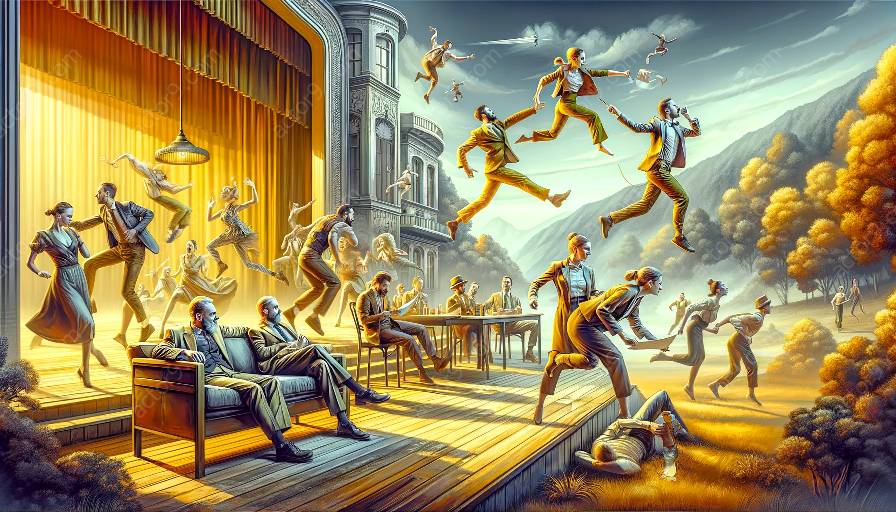Blending physical comedy with dramatic elements in theatre can be a complex and rewarding endeavor. This topic cluster will explore the challenges and intricacies of harmonizing comedic and dramatic elements in physical theatre, and the unique aspects of physical theatre that contribute to this dynamic. Let's delve into the creative and technical considerations involved in achieving a seamless integration of humor and emotion on the theatrical stage.
Understanding the Essence of Physical Theatre
Physical theatre is a performance style that emphasizes the use of the body as a primary means of storytelling. It often involves exaggerated movements, acrobatics, mime, and other non-verbal communication techniques to convey the narrative. The physicality of the performance serves as a powerful tool for evoking emotions and engaging the audience.
Incorporating comedic elements into physical theatre requires a deep understanding of the interplay between physicality and humor. Comedic aspects of physical theatre can involve slapstick, clowning, exaggerated gestures, and absurd movements that elicit laughter through their sheer physicality. The challenge lies in balancing these comedic elements with the need to convey poignant and dramatic moments effectively within the physical performance.
Challenges of Blending Physical Comedy and Dramatic Elements
One of the primary challenges in blending physical comedy with dramatic elements in theatre is maintaining a cohesive narrative flow. As physical comedy often relies on exaggerated, playful movements and actions, seamlessly transitioning to moments of emotional depth and intensity can be a delicate balancing act. The juxtaposition of comedy and drama should feel organic and serve the overarching storyline without disrupting the audience's engagement.
The creation of a cohesive character with the ability to authentically embody both comedic and dramatic traits is another challenge. Actors and performers must possess a versatile skill set to convincingly portray the range of emotions required in blending physical comedy with dramatic elements. The ability to transition between comedic timing and depth of emotion while maintaining physical precision is a demanding task that necessitates astute training and practice.
Furthermore, the design and execution of physical comedy sequences within the context of a dramatic storyline require meticulous attention to detail. Choreographing movements, gestures, and interactions to elicit laughter without diluting the emotional impact of the dramatic moments demands a nuanced approach. The timing and rhythm of physical comedy must harmonize with the narrative beats of the dramatic elements, enhancing rather than detracting from the overall theatrical experience.
Embracing the Integration of Comedy and Drama
Successfully blending physical comedy with dramatic elements in theatre involves embracing the symbiosis of laughter and pathos. When executed skillfully, this integration can elevate the emotional resonance of a performance by allowing moments of levity to enhance the depth of dramatic revelations. The juxtaposition of comedy and drama can create a rich tapestry of human experience, engaging audiences on multiple levels and leaving a lasting impression.
Exploring the nuances of physical theatre adds layers of complexity to the challenge, as physicality becomes integral to the storytelling process. The comedic aspects of physical theatre, with its emphasis on kinetic energy, visual humor, and exaggerated expression, provide a vibrant canvas for infusing dramatic elements. The fusion of laughter and poignancy within a physical performance can create a captivating dynamic that transcends traditional theatrical boundaries.
Conclusion
Blending physical comedy with dramatic elements in theatre is a multifaceted endeavor that requires a deep understanding of physicality, emotional resonance, and narrative coherence. Navigating the challenges of this fusion involves meticulous craftsmanship, artistic vision, and a profound appreciation for the interplay of humor and drama. The comedic and physical aspects of physical theatre offer a rich palette for theatrical innovation, inviting performers and creators to explore the intricacies of human expression through the art of movement and emotion.




































